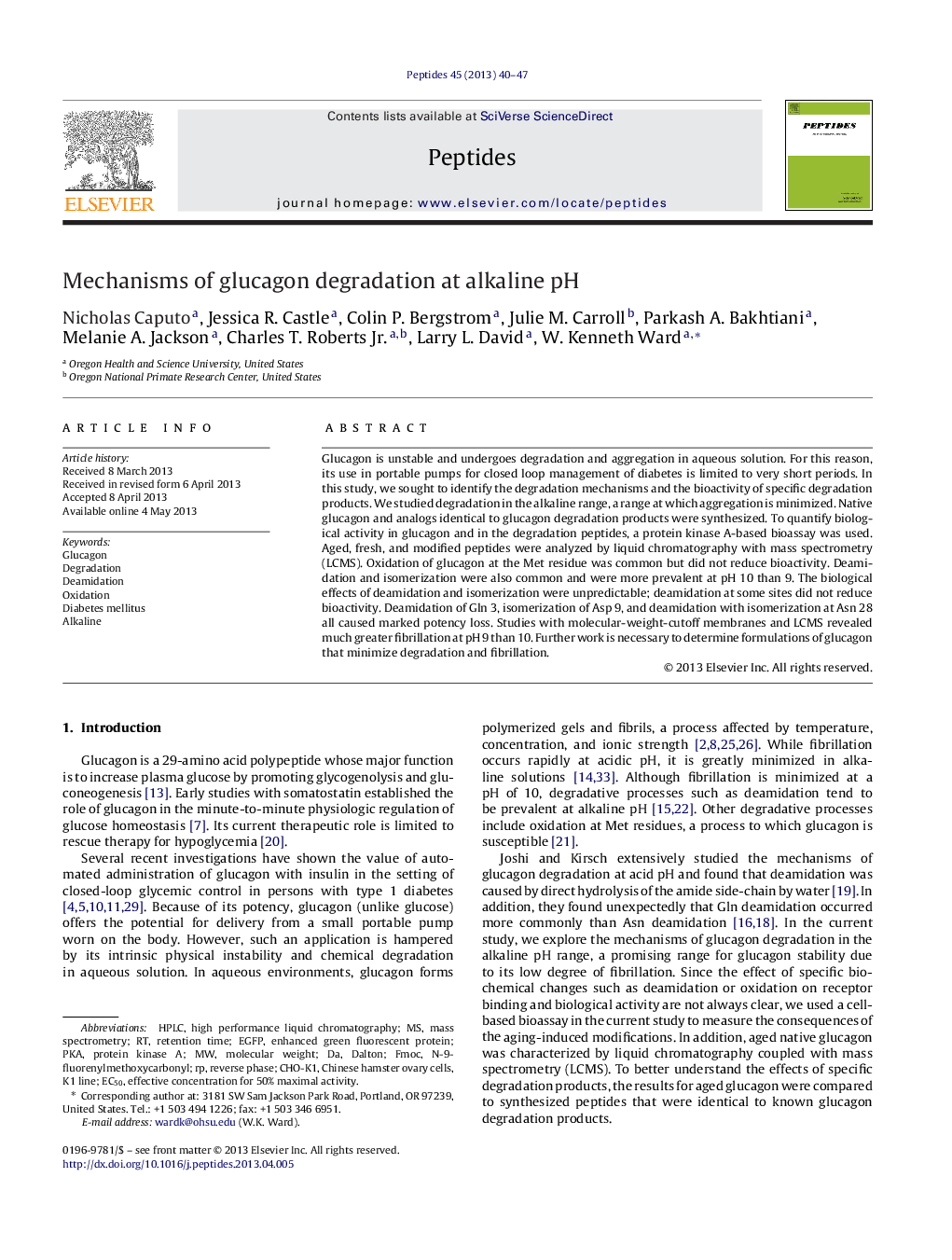| کد مقاله | کد نشریه | سال انتشار | مقاله انگلیسی | نسخه تمام متن |
|---|---|---|---|---|
| 8348666 | 1541734 | 2013 | 8 صفحه PDF | دانلود رایگان |
عنوان انگلیسی مقاله ISI
Mechanisms of glucagon degradation at alkaline pH
دانلود مقاله + سفارش ترجمه
دانلود مقاله ISI انگلیسی
رایگان برای ایرانیان
کلمات کلیدی
CHO-K1FMOCpKaEC50eGFPDeamidation - انحلالOxidation - اکسیداسیونDegradation - تنزلdalton - دالتونDiabetes mellitus - دیابت قندیRetention time - زمان بازداریMass spectrometry - طیف سنجی جرمیalkaline - قلیاییReverse phase - مرحله معکوسMolecular weight - وزن مولکولیenhanced green fluorescent protein - پروتئین فلورسنت سبز افزایش یافته استprotein kinase A - پروتئین کیناز Ahigh performance liquid chromatography - کروماتوگرافی مایع با کارایی بالاHPLC - کروماتوگرافی مایعی کاراGlucagon - گلوکاگون
موضوعات مرتبط
علوم زیستی و بیوفناوری
بیوشیمی، ژنتیک و زیست شناسی مولکولی
زیست شیمی
پیش نمایش صفحه اول مقاله

چکیده انگلیسی
Glucagon is unstable and undergoes degradation and aggregation in aqueous solution. For this reason, its use in portable pumps for closed loop management of diabetes is limited to very short periods. In this study, we sought to identify the degradation mechanisms and the bioactivity of specific degradation products. We studied degradation in the alkaline range, a range at which aggregation is minimized. Native glucagon and analogs identical to glucagon degradation products were synthesized. To quantify biological activity in glucagon and in the degradation peptides, a protein kinase A-based bioassay was used. Aged, fresh, and modified peptides were analyzed by liquid chromatography with mass spectrometry (LCMS). Oxidation of glucagon at the Met residue was common but did not reduce bioactivity. Deamidation and isomerization were also common and were more prevalent at pH 10 than 9. The biological effects of deamidation and isomerization were unpredictable; deamidation at some sites did not reduce bioactivity. Deamidation of Gln 3, isomerization of Asp 9, and deamidation with isomerization at Asn 28 all caused marked potency loss. Studies with molecular-weight-cutoff membranes and LCMS revealed much greater fibrillation at pH 9 than 10. Further work is necessary to determine formulations of glucagon that minimize degradation and fibrillation.
ناشر
Database: Elsevier - ScienceDirect (ساینس دایرکت)
Journal: Peptides - Volume 45, July 2013, Pages 40-47
Journal: Peptides - Volume 45, July 2013, Pages 40-47
نویسندگان
Nicholas Caputo, Jessica R. Castle, Colin P. Bergstrom, Julie M. Carroll, Parkash A. Bakhtiani, Melanie A. Jackson, Charles T. Jr., Larry L. David, W. Kenneth Ward,